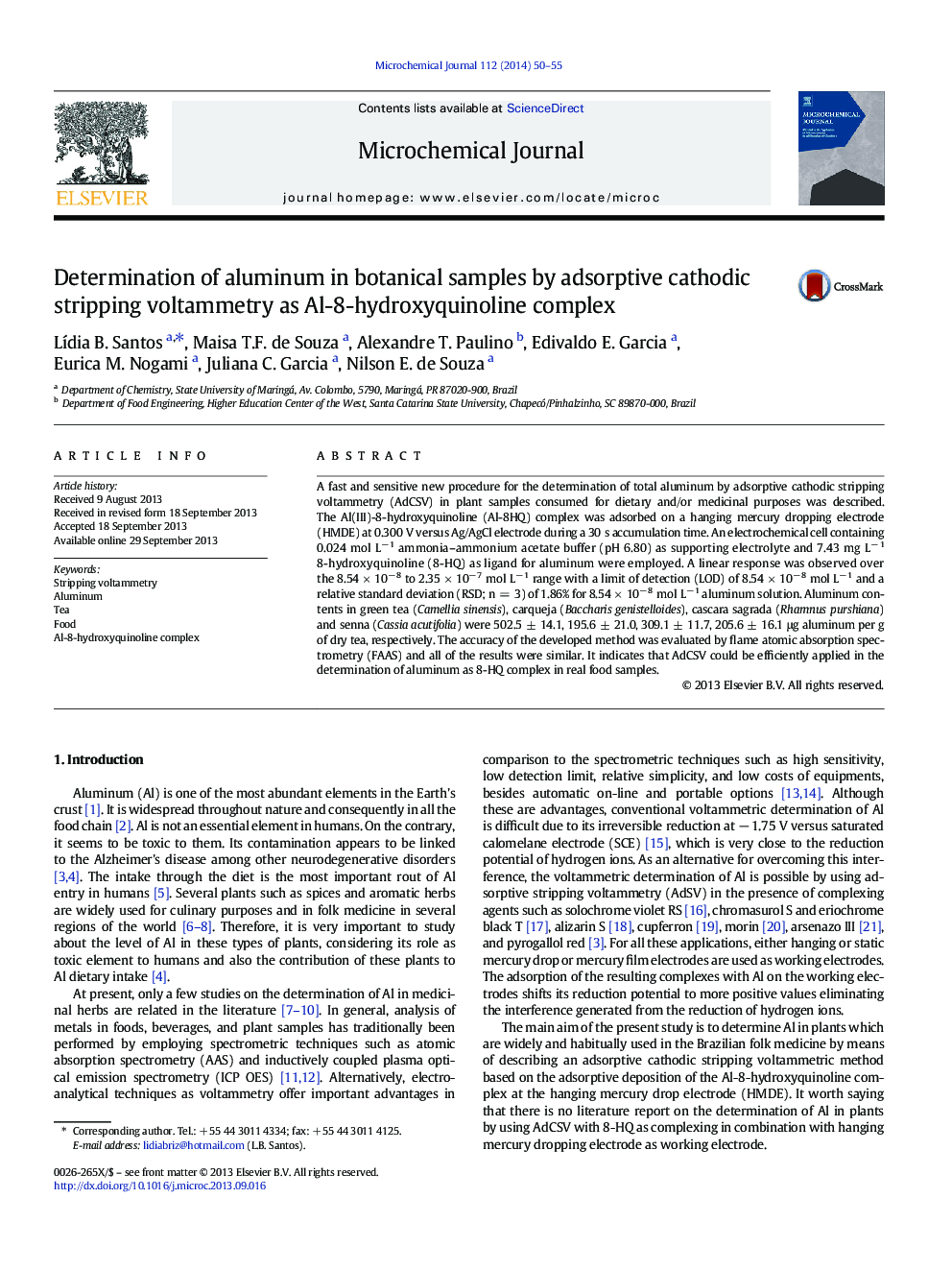| Article ID | Journal | Published Year | Pages | File Type |
|---|---|---|---|---|
| 7643316 | Microchemical Journal | 2014 | 6 Pages |
Abstract
A fast and sensitive new procedure for the determination of total aluminum by adsorptive cathodic stripping voltammetry (AdCSV) in plant samples consumed for dietary and/or medicinal purposes was described. The Al(III)-8-hydroxyquinoline (Al-8HQ) complex was adsorbed on a hanging mercury dropping electrode (HMDE) at 0.300 V versus Ag/AgCl electrode during a 30 s accumulation time. An electrochemical cell containing 0.024 mol Lâ 1 ammonia-ammonium acetate buffer (pH 6.80) as supporting electrolyte and 7.43 mg Lâ 1 8-hydroxyquinoline (8-HQ) as ligand for aluminum were employed. A linear response was observed over the 8.54 Ã 10â 8 to 2.35 Ã 10â 7 mol Lâ 1 range with a limit of detection (LOD) of 8.54 Ã 10â 8 mol Lâ 1 and a relative standard deviation (RSD; n = 3) of 1.86% for 8.54 Ã 10â 8 mol Lâ 1 aluminum solution. Aluminum contents in green tea (Camellia sinensis), carqueja (Baccharis genistelloides), cascara sagrada (Rhamnus purshiana) and senna (Cassia acutifolia) were 502.5 ± 14.1, 195.6 ± 21.0, 309.1 ± 11.7, 205.6 ± 16.1 μg aluminum per g of dry tea, respectively. The accuracy of the developed method was evaluated by flame atomic absorption spectrometry (FAAS) and all of the results were similar. It indicates that AdCSV could be efficiently applied in the determination of aluminum as 8-HQ complex in real food samples.
Keywords
Related Topics
Physical Sciences and Engineering
Chemistry
Analytical Chemistry
Authors
LÃdia B. Santos, Maisa T.F. de Souza, Alexandre T. Paulino, Edivaldo E. Garcia, Eurica M. Nogami, Juliana C. Garcia, Nilson E. de Souza,
